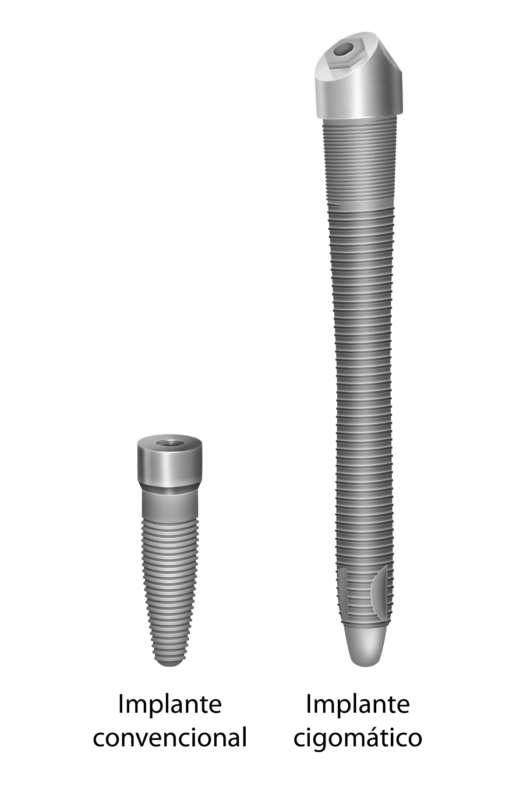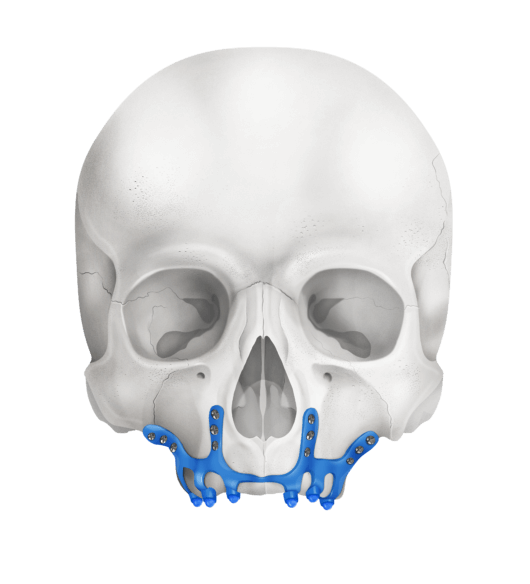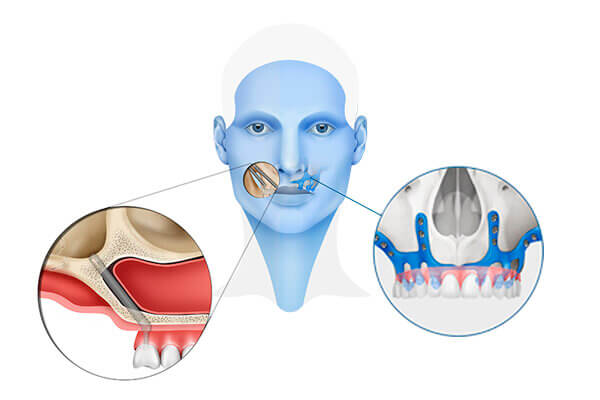Zygomatic implants and subperiosteal implants are types of dental implants that are used when there is not enough jawbone to support traditional implants. But when is each recommended? Let's look at some differences between the two:
Shape:

-Zygomatic implants are extra long implants whose length is due to their placement site.
-Subperiosteal implants are personalized implants to the anatomy of each jaw. It is a metallic frame designed by computer individually to cover the bony surface of the patient's jaw.
Location:
-Zygomatic implants are placed in the zygomatic bone, which is located in the cheekbone area, so they can only be used in the upper arch
- Subperiosteal implants are fixed on the surface of the mandibular bone just below the gum, so they can be used in both arches, although without penetrating the bone like conventional or zygomatic implants.
Surgical procedure:
- Zygomatic implants involve the placement of an implant that is 'anchored' to the zygomatic bone
- Subperiosteal implants rest on the surface of the maxillary bone and are fixed by small titanium screws that penetrate slightly into the densest bone areas.
Bone density:
-Zygomatic implants are generally used for patients with very low jaw bone density
- Subperiosteal implants are used for patients with a slightly lower bone density than that required for traditional implants.
The difference of both with conventional implants is that we are no longer worried about bone density because they are going to look for areas with higher bone density. In the case of the zygomatic, we look for the density of the zygomatic bone and in the case of the subperiosteal, we plan it using 3D tomographic images with computer design programs.
Stability:

Both provide great stability right out of the box.
-Zygomatic implants provide a more stable base for artificial teeth, as they are attached directly to the zygomatic bone, which is a denser and stronger part of the jawbone compared to the jawbone itself.
-Subperiosteal implants, on the other hand, rely on the stability of the surrounding gum tissue and jaw bone to provide support for the artificial teeth. These implants do not require waiting for the osseointegration process.
Cost:
The cost is currently similar, with zygomatic implants being somewhat more expensive due to the complexity of the surgical procedure and the specialized equipment required, requiring great skill on the part of the surgeon. Zygomatic implants are a more "technical-sensitive" technique since they depend more on the good hand of the operator, while the subperiosteal implant depends more on good planning and the minimization of errors during record-taking and digitalization of the records. themselves.
It is important to note that the success of zygomatic and subperiosteal implants depends on several factors, including the patient's oral health and jaw stability, as well as proper implant placement and maintenance. A thorough evaluation by a qualified dental professional is necessary to determine which type of implant is best for each individual case.








